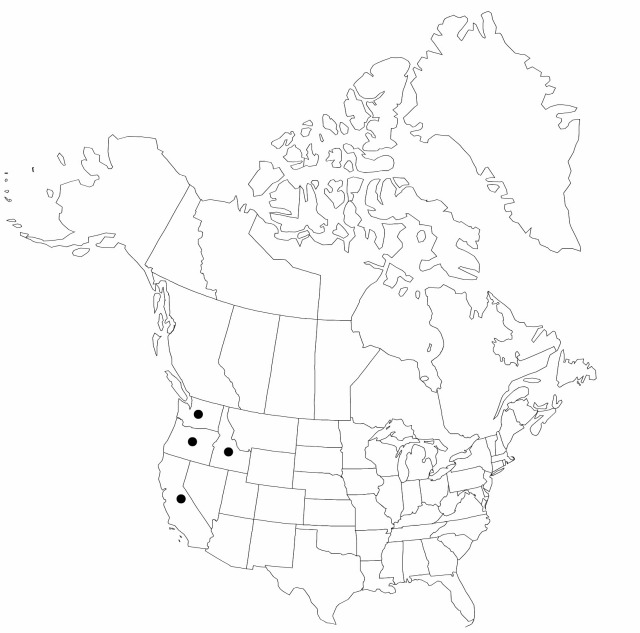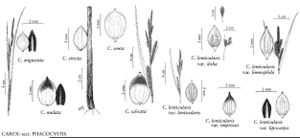Carex angustata
in W. J. Hooker, Fl. Bor-Amer. 2: 218. 1839.
Plants not cespitose. Culms acutely angled, 30–110 cm, scabrous. Leaves: basal sheaths redbrown; sheaths of proximal leaves bladeless, scabrous, fronts with redbrown spots, prominently ladder-fibrillose, apex redbrown, U-shaped; blades hypostomic, 4–7 mm wide, papillose abaxially. Inflorescences: proximal bract subequal to inflorescence, 3–6 mm wide. Spikes erect; staminate 1–2; pistillate 3–4; proximal pistillate spike 2.5–7 cm × 3–5 mm, base attenuate. Pistillate scales redbrown or black, longer than perigynia, apex acute, awnless. Perigynia ascending, pale-brown with redbrown spots on apical 1/2, 1–3-veined abaxially, somewhat flattened, loosely enclosing achenes, ellipsoid or obovoid, 2.2–3 × 1.2–2 mm, dull, apex obtuse or acute, papillose; beak redbrown, 0.2–0.5 mm. Achenes not constricted, dull. 2n = 66, 68.
Phenology: Fruiting Jul–Aug.
Habitat: Wet meadows along streams
Elevation: 300–2300 m
Distribution

Calif., Idaho, Oreg., Wash.
Discussion
Carex angustata is a member of the C. stricta complex based on the scabrous, red-brown, bladeless ladder-fibrillose sheaths, the veined perigynia, the hypostomic leaves, and the low chromosome numbers. It is distinguished from sympatric members of the group, C. nudata and C. senta, by the rhizomatous habit, the few-veined perigynia, and the scabrous stems and from the often-sympatric C. aquatilis by the scabrous, veined sheaths and the veined perigynia.
Selected References
None.
Lower Taxa
"shortened" is not a number.
